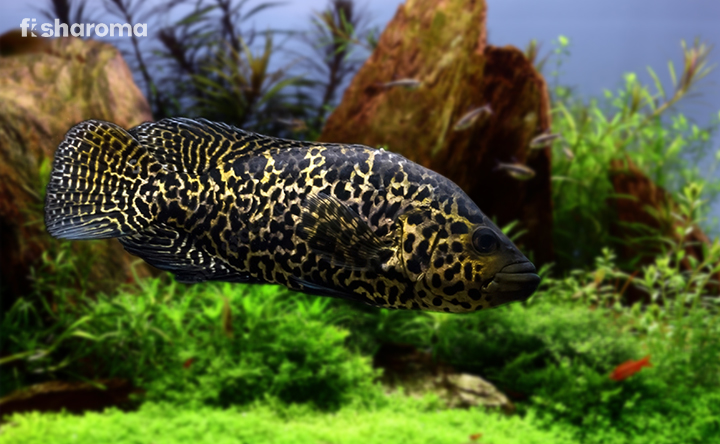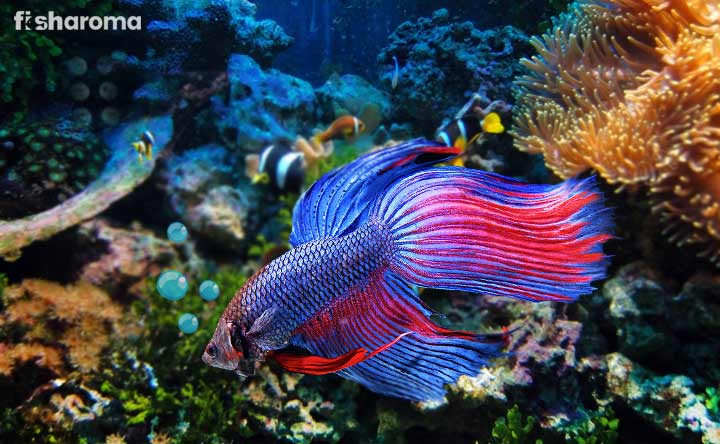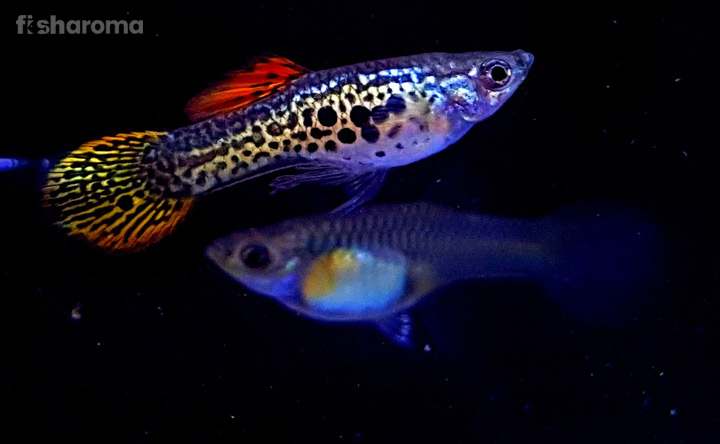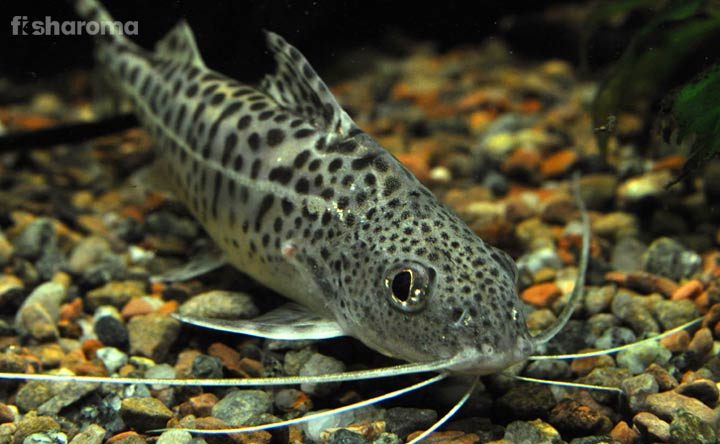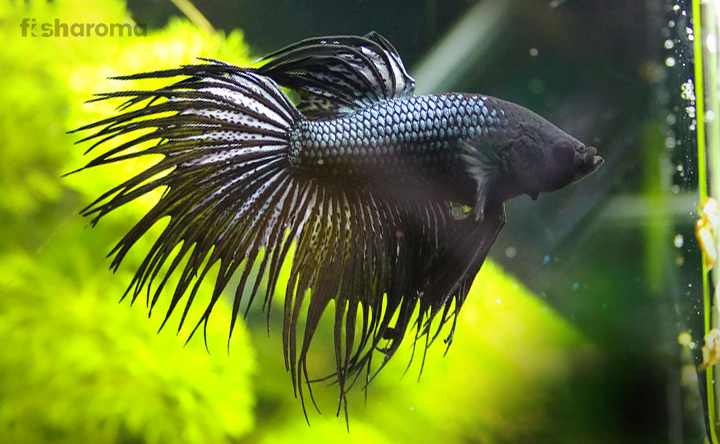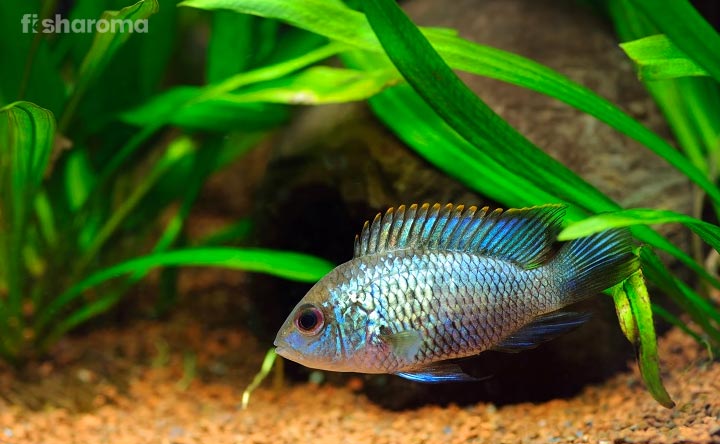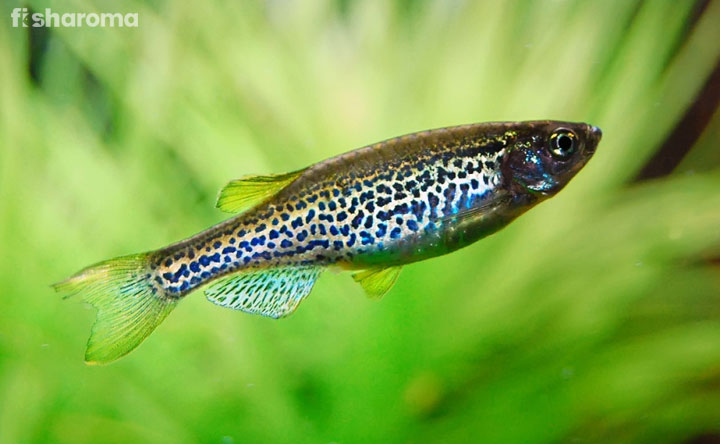Molly Fish – The Complete Care Guide for Your Cute Water Buddy
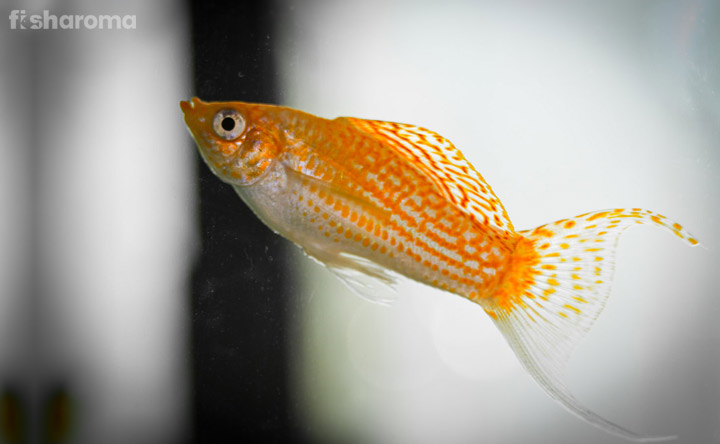
Are you a novice hobbyist of fishkeeping, and looking for both a beginner-friendly and a beautiful fish for your aquarium? Well, as per the expert’s suggestion, a cute little familiar Molly Fish will be the perfect choice for you.
The unique personality, colorful appearance, social and friendly nature of a Molly Fish makes it familiar to both experienced and new aquarists. If you are interested in petting this fish then we are here to help you with a detailed care guide.
Quick Details on Molly Fish
Yes, you will get complete instructions to nourish and breed Mollies but before that, have a quick look on a few facts about the species in the below-mentioned table.
| Scientific Name | Poecilia sphenops |
| Origin | Mexico, U.S., etc. |
| Life-Span | Up to 5 years |
| Colors | White, Green, Yellow-Orange, Black, Golden, etc. |
| Temperament | Peaceful |
| Size | Up to 4.5” (11.43 cm) |
| Diet | Omnivore |
| Family | Poeciliidae |
| Compatibility | With Peaceful Community |
| Tank Size | 10 gallons |
| Care Level | Easy |
Overview
Similar to Guppies, this fish is a livebearer, which can hold its eggs in its body until the fish gives birth. In this case, this species does this to live young for a long time. Mollies can live both in freshwater and brackish water. You will find about 40 species of the same genus and some are very popular among fish enthusiasts.
Now, you need to set a peaceful community tank for this calm-natured shy fish because it avoids fight and aggression. If you take proper care of this breed then it can live up to 5-6 years. You get common varieties of popular Mollies in $2-$4, and rare species cost more.
Origin of Molly Fish
Native to the rivers and streams near Columbia, Mexico, Central America, and brackish water near Texas, Carolina, Florida, and Virginia, this hardy fish has a unique ability to adjust in both freshwater and saltwater that have different temperatures. This is the most common reason that the fishkeepers select this easy-to-breed Molly for their aquarium.
Appearance of Molly Fish
You will get a wide variety of Mollies that have different colors, shapes, patterns, and sizes. If we describe the features of a common Molly, you will find that it has a flat body, narrow-pointed mouth, large fan-shaped caudal fin, and flat fan-shaped dorsal fin. Their beautiful fins, patterns, and colors such as white, green, yellow, and orange attract every aquarist to adopt them.
The male fish has a pointed anal fin with gonopodium and the female fish has triangular fan-shaped anal fin. Moreover, female Mollies are taller and fatter than male Mollies. The pregnant Mollies look larger because of their swelling bellies, filled up with eggs.
Molly Fish Temperament
Mollies are peaceful breeds as we have discussed at the beginning, but they show signs of aggression when they are kept with a lot of other breeds because this fish does not like an over-crowded tank. Therefore, experts suggest keeping them with passive-natured fish in a spacious tank.
Suitable Tankmates for Molly Fish
It is an active and social species that enjoys schooling with the same community fish and other peaceful breeds. Don’t keep male and female together because the male Mollies harass the females.
When you are encouraging their mating, arrange a separate tank where you can keep one male and one female Molly together.
Some of the preferred tankmates of Mollies are:
- Danios
- Cherry Barbs
- Corydoras Catfish
- Rosy Barbs
- Dwarf Gourami
- Zebra loaches
- Harlequin Rasbora
- Platies
- Yo-Yo Loaches
- Tetras
- Snails
Unsuitable Tankmates
It is quite natural that a shy and passive-natured Molly will never like dwelling with aggressive and large fish because predator fish breeds can fight with it, and even can end up eating the Molly Fish. So, have a look at a few unsuitable tankmates for this fish:
- Convict Cichlid
- Angelfish
- Oscar Fish
Compatibility of Molly Fish
This social and familiar-natured fish enjoys living in a shoal of Mollies, but as discussed before, avoid keeping male fish with the female because males have a high tendency to fight with the females and harass them. Try keeping Mollies in a school of females, and you can also keep other peaceful fish breeds together.
Dietary Requirements for Molly Fish
Molly fish is an omnivoros species, so there are a wide variety of food choices for this species. You just need to know the exact foods and the quantity to feed them in a specific time.
This fish likes consuming both vegetation and meaty foods. It uses its mouth to scrape algae from the driftwoods and rocks underwater. Some vegetative and meaty foods you can feed them are:
- Small Pieces of Green Vegetables
- Spinach
- Zucchini
- Squashed Lettuce Leaves
- Boiled and Raw Cucumbers
- Bloodworms
- Tubifex
- Brine Shrimps
You will also find various frozen pellets or dried flakes available in the market that are nutritious for your pet Molly fish. Take a look at a few food names:
- Fluval Bug Bites
- API Fish Food Pellets
- Hikari Fancy Guppy
Mollies are small in size and they have a delicate digestive system, so feed them in a small quantity twice a day as per the suggestion of a veterinary nutritionist.
Tank Requirements for Molly Fish
As we have mentioned previously, Molly is adjustable with different water conditions in wild river and brackish water, so no specification is needed for the fish. But try to follow a precise guide while captivating it in your tank:
Tank Size
A 10-gallon tank is enough for a 4.5” (11.43 cm) Molly Fish. If you are keeping many Mollies together then purchase a 20-gallon aquarium because Mollies need a huge space to swim.
Don’t overcrowd the tank because that may lead to fighting between the breeds. The largest Molly is Sailfin Molly that needs at least a 30-gallon tank to live.
Ornaments
Adorn the tank with plenty of plants for the greenery-lover fish. You can choose taller plants like Anubias Nana and Anacharis, which can be the great shelters for this mid-level swimmer. Moreover, these plants can help them during the time of spawning and reproduction.
You can also decorate the aquarium with caves, rocks, and crevices that will help the shy fish hide from its enemies.
Substrate
Keep sandy substrate with debris, small rocks and fine gravels at the bottom bed of the aquarium because this fish prefers taking rest in the sandy bed at night.
Lighting
Arrange a good supply of standard light on the ceiling of the tank that will help the growth of the freshwater plants in the tank. Moreover,this fish prefers bright light in its tank, as it is a diurnal-active species.
Filter
Mollies like living in shallow and slow-moving water, so no water pump and artificial current are required for their tank. Just keep a good filtration system that will help in keeping the water clean and germ-free.
Water Type for Molly Fish
If you put a pinch of sea salt in the tank water then it will be the best place to dwell for your little Molly. Remember, the water condition of the fish should be clean, and follow some experts’ guide while setting water in the aquarium.
Temperature
Try to keep the water temperature between 72-78° F (22-25° C) for your pet Molly fish.
Hardness
The hardness of the water should be 20-30 dKH.
pH Level
The pH level of water should be 6.7-8.5.
Cleaning Method
Molly fish does not excrete much like other aquatic species, so no need to follow a special process to clean the fish tank. Just use mild soap, a soft sponge, and a brush to clean the walls and corners of the aquarium. They can eat the algae of the tank, so there will be no need to brush out the algae from the tank specifically. Wipe out the water droplets from the internal and external walls of the tank after a clean wash to maintain dryness.
Replacement Process
You may ask, why is it necessary to replace the water of the tank? The answer is quite simple, if you don’t change the water then the fish will fall sick because of the pollutants in the tank. So, replace 10% of the water once a week or change 25% of the water once a month.
This will help in maintaining water quality. Moreover, try to maintain the above-mentioned temperature, hardness, and pH level of the water during the replacement process.
Molly Fish Breeding
We have already mentioned that Molly Fish is a livebearer that develops its eggs inside its body and reproduces a live fry. You will never find any complications in the breeding process of this fish because it is one of the easiest breeds that can mate and give birth both in captivity and wild.
Check the water temperature and quality before you are keeping a male and female Molly Fish for mating, spawning and reproducing in a separate tank. The temperature of the water should be a minimum of 75°F (23°C) for the breeding process.
The male fish copulates with the unaware female fish from behind. During the mating process, the male Molly Fish uses gonopodium, a tube-shaped ejaculation organ to stick closer to the female and fertilize her.
Female Molly Fish carries eggs for about 35-45 days in her abdomen, and gives birth in a dark corner of the spawning tank at early morning. After the reproduction, the male fish takes care of its eggs or fries.
Not all, but some Molly fish can eat the small fries, so it is necessary to keep the fries in a separate tank until it grows adult. Once the fries turn mature, you can feed small flakes, micro worms, fruit crumbs and leaves juice to them.
At the age of six months, this fish becomes adult and ready to mate. Large-sized female fish could release up to 100 eggs.
Types of Molly Fish
Not only one but a wide array of Molly Fish belongs to the same family but looks different from one another. Here are a few names we have enlisted for you. You may add these breeds to your residential or commercial aquarium.
- Dalmatian Molly Fish – This peaceful black and white fish can grow up to 5” (12.7 cm), which is the reason it needs a huge spacious tank for swimming with a school of Mollies. Also, try to put a good filter and heater in a 30-gallon aquarium for the comfort and wellbeing of the breed.
- White/Silver Sailfin Molly –You will find turquoise blue markings on the caudal fin of this fish. The long fins, silvery scales and white body of this 5” (12.7 cm) Molly fish can bring ecstasy in your aquarium. So, both the beginners and experts like petting this fish. Same like a Common Molly Fish, the White/Silver Sailfin Molly can live at different types of water conditions.
- Black Sailfin Molly – This 4” (10 cm) species is also hardy and peaceful fish and it is entirely black in color. It does not have a bright appearance, but its fan-shaped fins attract the fish keepers. Find a 30-gallon tank, and avoid keeping the breed with fin-nippers to safeguard your pet fish from injuries and fights.
- Gold Dust Molly – The golden-yellow body and blackish fins of this 5” (12.7 cm) fish are quite attractive. Moreover, its peaceful nature is loved by all types of fish hobbyists. Females are fatter than males and they also develop spots during pregnancy. A 30-gallon planted fish tank is an ideal home for your pet fish.
- Black Lyretail Molly – You will find large black scales on the body of this passive-natured fish with lyre-shaped caudal fins. This is also a 5” (12.7 cm) fish that can be kept in a 30-gallon tank. Try to keep a good filtration system in its tank because it excretes a lot of poop than other Mollies.
- Balloon Belly Molly Fish – A 25-gallon aquarium is enough for this 3” (5 cm) fish. It’s the most prominent feature is the cute and fat tummy which is just like a balloon. The black spots in the yellow-white body of this fish are protruding, and it also has a lyre-shaped caudal fin.
- Gold Doubloon Molly – This 5” (12.7 cm) fish has a shimmering bicolored body with small fins. This vibrant-shaded Molly Fish needs live plants, small pebbles, and huge space because of its jumping nature.
- Marble Lyretail Molly – The shinning black and white Marble Lyretail Molly has bright eyes and lyre-shaped caudal fin. Its tail is just like a hand fan with a dark grey shade. The multi-colors and patterns of this fish make it quite attractive to fish enthusiasts. This fish is an active swimmer, so a 30-35 gallons tank is required for the species.
- Harlequin Sailfin Molly – This golden-yellow colored Molly fish has black and white patches speckled on its body. Along with the dazzling colors and patterns, the peaceful and hardy nature of this 6” (15.24 cm) fish is appreciated. This is the main reason that this breed is globally popular.
- Platinum Lyretail Molly – This Molly fish has a lyre-shaped tail and bright platinum body. Compared to other Mollies, this 5” (12.7 cm) fish has small dorsal fins. It can dwell in both saltwater and freshwater like Common Molly Fish.
- Golden Sailfin Molly –Both for tropical and brackish water tanks, this peaceful and hardy fish is suitable and it grows up to 6” (15.24 cm) in captivity. This golden-hued fish is an algae eater and it prefers dwelling in a green environment. So, try to arrange a heavy-planted 30-gallon aquarium for this fish.
- Dalmatian Lyretail Molly – People often get confused with the looks of Marble Lyretail Molly and Dalmatian Lyretail Molly because of the same black and white shades on their bodies. However, the tail of Dalmatian Lyretail Molly is larger and rounder in shape as compared to Marble Lyretail Molly. This 3” (7.62 cm) fish is peaceful and loved by aquarists because of its nature and appearance.
Diseases of Molly Fish with Interventions
Molly fish is the hardiest fish compared to other freshwater breeds, and it also does not face any trouble during the breeding process. Still, you need to maintain the quality of the water where you keep your pet Molly because some parasitic, fungal and bacterial infections can harm your cute little buddy. It is often heard that Mollies are prone to some diseases such as:
- Molly Disease or Livebearer Disease
- Shimmies
- Velvet Disease
- Ich
- Appetite Problem
- Discoloration
- Wiggling in Weakness
Most of these diseases are cause because of the poor quality of the water, unhygienic environment, stress and wrong diet. In such cases, you must take precautions from the very beginning by replacing the tank water weekly or monthly, and feeding nutritious foods to your pet Molly Fish.
Ending Note
If you really like to add this adorable and calm-nature fish in your aquarium then we hope the detailed guide will definitely help you take care of your pet Molly Fish. Remember, fishkeeping is not only your hobby, but it is your responsibility.
Interesting Facts about Molly Fish
- Every female Molly often chooses to mate with the largest male fish.
- Compared to other freshwater fish breeds, Molly Fish can reproduce fast.
- They are active eaters and like to consume a huge amount of foods.
- Molly Fish is also known as Mollienesia.
Know about More Freshwater Fish that are Best for Beginners
The pleasant appearance, hardy nature, peaceful temperament, and adjustable behavior help beginners’ choosing Molly Fish for their aquarium. Similarly, there are other fish breeds, which has the same characteristics. To know about them, read the entire care guide about each species given below:
- Comet Goldfish: Not only because of the vibrant shade and peaceful nature, but this golden-hued fish is also the mode of luck as per religious belief. Therefore, people love petting Comet Goldfish. If you also want to breed the fish then read the entire care guide.
- Neon Tetra: Native to the river near South America, the cute little Neon Tetra is one of the best beginner-friendly fish because it is small in size and peaceful. To know more about it, read the care guide.

